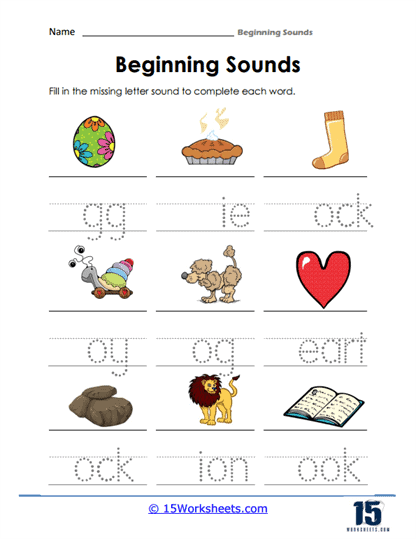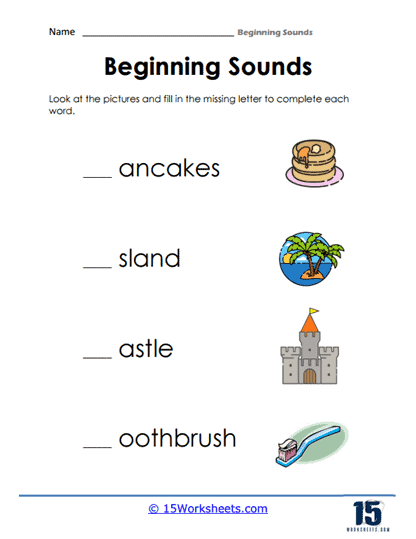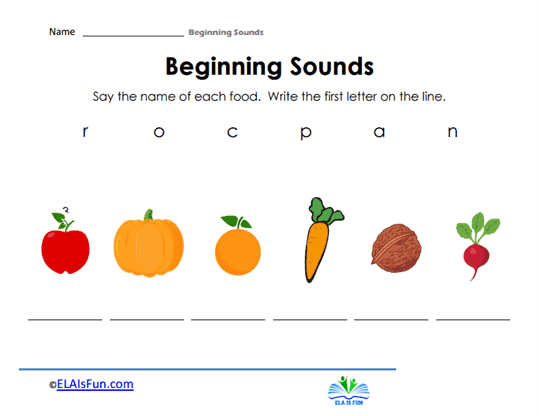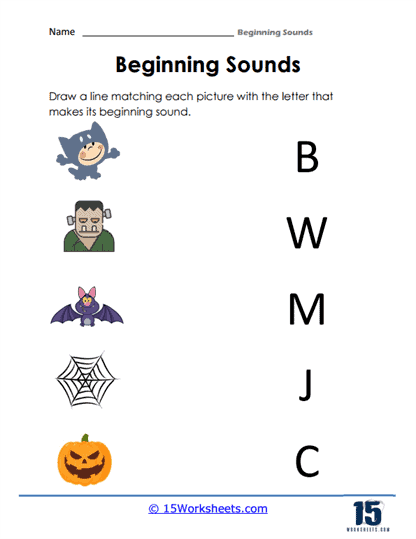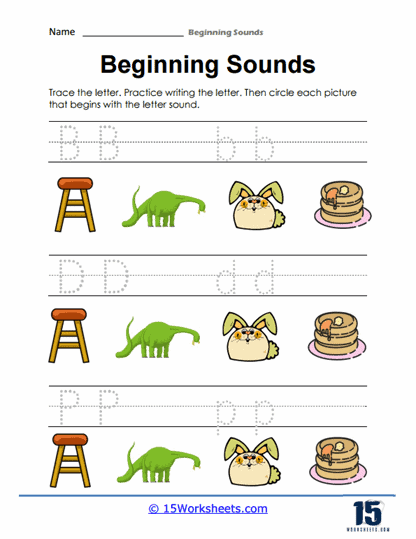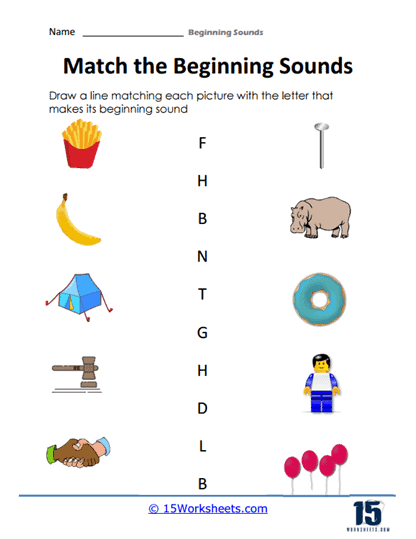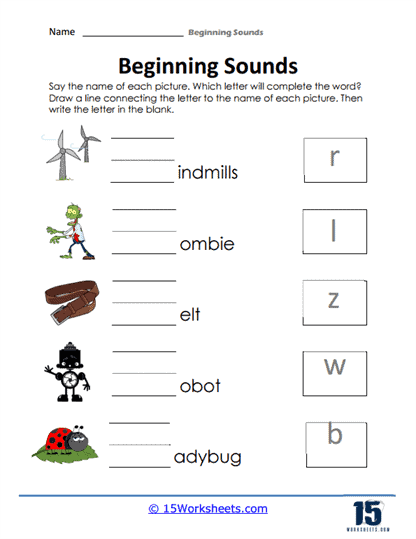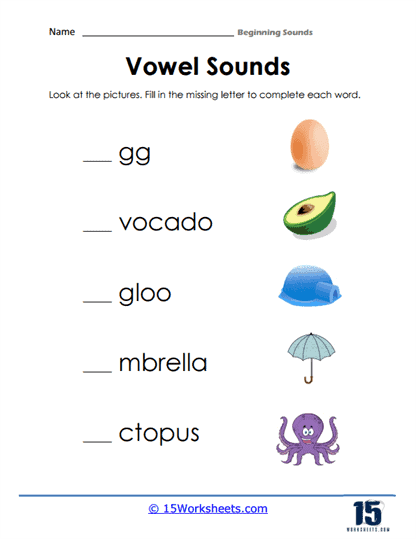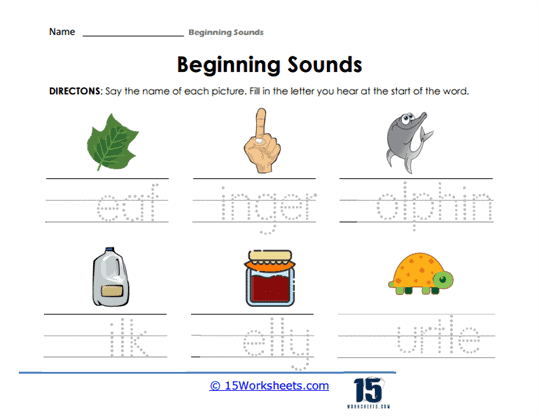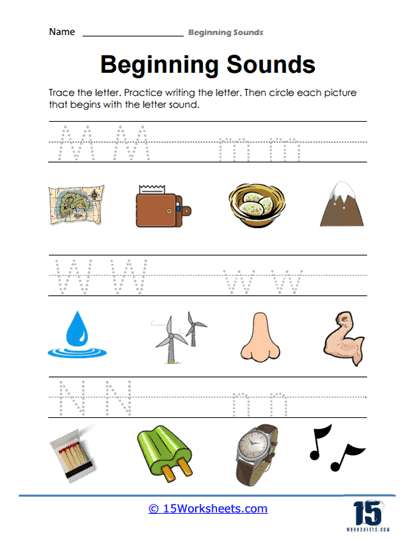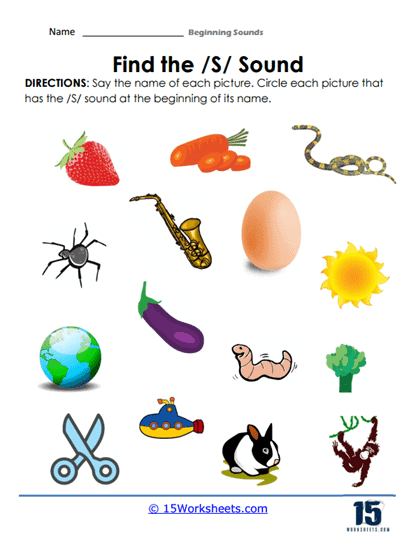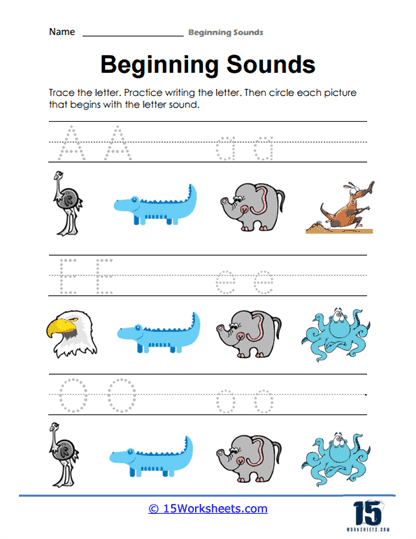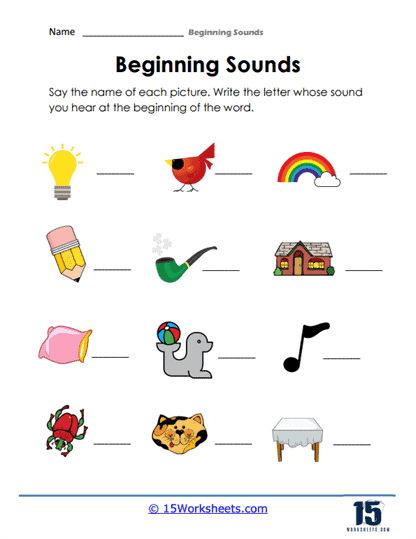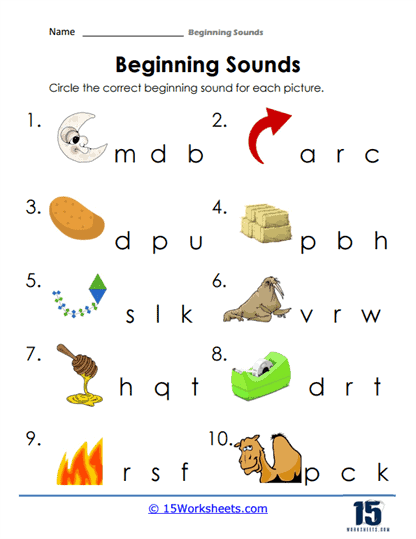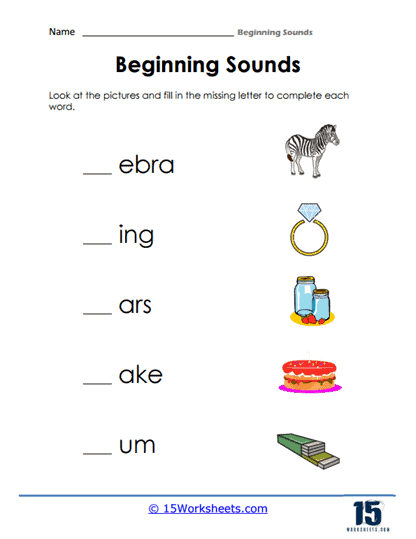Beginning Sounds Worksheets
All About These 15 Worksheets
These worksheets are designed to help students practice identifying and recognizing the initial sounds or phonemes in words. These worksheets include various activities, such as matching, sorting, or writing exercises, that focus on the first sound of a word. They are typically used with young learners or students in the early stages of reading development to build phonemic awareness and phonics skills.
How to Teach Beginning Sounds
Differentiating between similar sounds is a foundational reading ability that should be taught early on Parents and educators assist kids in learning to recognize and use individual sounds to identify common objects by saying things like a is for apple, b is for bat. Beginning sounds refer to the type of aural recognition and distinction.
Connecting a child’s oral language skills to written language is teaching them the beginning letter sounds of the letters they see and try to write themselves eventually.
Essential for Teaching the Beginning Sounds
Kids need to be educated. While they can learn a great deal simply by being around books, talking to adults, and seeing others, there is no substitute for direct, explicit literacy training. We have compiled the following list of suggestions to help you educate your students on the fundamentals of phonetics:
- Describe and demonstrate briefly. Be instructive and to the point.
- Kids need to be supported as they learn and grow. It’s crucial that you back this cause.
- Include many interactive exercises.
- Let the kids run around as they absorb information rather than restricting their movement.
- It’s important to keep the exercises going all year long. You can’t teach them once and expect them to learn overnight.
- Try to give the kids some sort of emotional investment in the experience.
- Use pictures.
- Remember the words and music you heard.
The following are some easy ways to teach beginning sounds to your students:
1. Beginning Sound Clip Card
Beginning sounds clip cards are a must-have for every classroom. They are excellent for teaching young children to associate letters with their sound. You can practice phonics, phonemic awareness, and blending actively with the help of clip cards.
2. Clothespin
You can also have access to a fun game with clothespins. These games help develop fine motor skills. You can learn various fine motor abilities such as handwriting, object manipulation, and even dressing up. These skills are essential for daily life and scholastic success.
Kids snip the first letter of the word that best describes the picture on the card by saying it aloud. The words are displayed with a blank line signifying the missing sound to avoid any misunderstandings about what the images represent.
Clothespins can be used in different ways to help youngsters learn and have fun. They are relatively cheaper than their counterparts.
3. Task Cards
Task cards cover the alphabet from A to Z and help children become more proficient at identifying and separating individual sounds, associating those sounds with written letters, and writing those letters. Children are to identify the picture on the work card and then to say and write the beginning sound of the picture.
Task cards are adaptable enough to be used for different phonics-related activities with kids. They can be used in various settings, including the school and the home.
4. Printable Worksheets
You can also use printable worksheets to teach beginning sounds. You can help your students learn to read by having them connect the picture to the letter that stands for the initial sound. The printable exercises are intended to improve students’ phonemic awareness in the elementary stage.
The beginning sounds worksheets can be used in different ways. You can easily print the sheet and use it as a test, homework, activity, or review after a short lecture.
Why Studying the Beginning Sounds of Words Matters
Studying the beginning sounds of words is essential for several reasons, particularly in language learning, literacy development, and speech therapy. Focusing on the initial sounds in words helps to build crucial skills and understanding in the following areas:
Phonemic Awareness – Developing the ability to identify, isolate, and manipulate individual sounds in spoken words is a key component of phonemic awareness. By focusing on the beginning sounds of words, learners can better recognize and differentiate between various phonemes, enhancing their listening and comprehension skills.
Phonics – Understanding the relationship between letters and their corresponding sounds is the foundation of phonics instruction. When learners study the beginning sounds of words, they become more familiar with letter-sound relationships, making it easier to decode words when reading and apply phonetic rules when spelling.
Vocabulary – Studying the initial sounds of words can help expand a learner’s vocabulary. As they become more familiar with various phonemes and their combinations, learners can recognize and understand new words more easily.
Reading Fluency – Focusing on the beginning sounds of words helps improve reading fluency by enabling learners to quickly recognize and process the initial phonemes in words. This, in turn, allows for smoother and more accurate reading, leading to better comprehension.
Spelling and Writing – When learners have a strong grasp of the beginning sounds of words, they can apply this knowledge to spelling and writing. Understanding phoneme patterns and letter-sound relationships makes it easier to spell words correctly and write more accurately.
Speech and Pronunciation – Studying the beginning sounds of words can also aid in speech and pronunciation development, as learners practice and refine their articulation of various phonemes.

